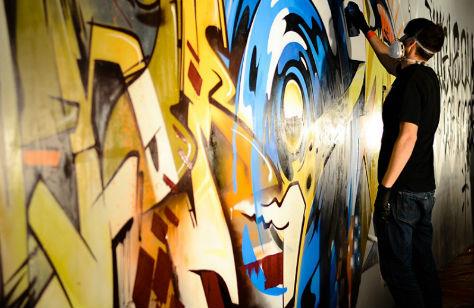Street Cred is quite the misused term, largely thanks to publicists throwing the term around whenever a product or artist needs a marketing angle. I mean, which streets are included in the credibility survey anyway?
The opinions of someone regularly strolling along Melbourne’s label-conscious Chapel St are likely to vary significantly to those of the pedestrian in gentrified grunge Smith St, in terms of who or what is credible in their view.
I’m guilty of applying Street Cred to marketing pitches, press releases and especially to conversations with potential clients when pitching my company’s creative services. I have a love-hate relationship with this phrase.
At one point in time, ‘Street Cred’ meant an endorsement from kids on the grimier side of the train tracks, in particular ghetto kids from the most influential cities in the USA (New York, LA, Chicago for example). The reason that their endorsement meant anything to the mainstream world was, and still is, that most of the Western world’s popular culture is borne in these neighborhoods. The most cutting-edge trends start on the streets before eventually being picked up by the mainstream.
Speaking more locally, a similar process occurs here. In Australia, like most other modern countries there is a small but highly influential tier of consumers who marketers love to call ‘Tastemakers’. Essentially these are the cool kids who set and adopt trends early and have enough influence on their peers to see these trends picked up and popularized. This segment actually have a good gauge for what is legitimately ‘cool’ before most people catch on. This segment recognize whether a product, artist or movement is credible and their endorsement counts. When I talk about the streets in the collective context, I’m usually referring to these tastemakers, these ‘cool kids’. Whilst they are less defined by socio-economic factors, the Australian tastemakers come from a variety of ethnic backgrounds and it is this varied perspective that helps to keep them ahead of the curve.
In terms of an event such as Carbon, our panelists and guest artists are picked with credibility in mind. We, as event organizers, are not deciding whether or not these individuals are credible. In most cases the streets already decided that for us. We pay attention to the streets and we hunt out the people who have the endorsement of our community. And this is where Carbon differs from other design and creative conferences. Our lineup is selected not just based on their creativity and skill but also their street cred- Ah, there I go using that marketing catchphrase again!
In terms of the speakers and artists we select to participate in Carbon, we work towards a lineup that considers the contribution that each speaker has made to the contemporary culture landscape. Some are pioneers with careers dating back several decades, others are new-school, having only made their presence felt in recent years. Some of the speakers who contribute to Carbon have come from poverty, from the streets and have gone on to forge successful careers for themselves (PM Tenore of RVCA for example). This equates to instant street cred.
By comparison, Henry Chalfant and Martha Cooper were complete outsiders who successfully infiltrated underground culture in 1980s New York in order to document the creativity borne out of the ghetto. In spite of being from completely different worlds, these two documentarians have continued to be celebrated by the streets and their credibility is their passport.
Others such as Shawn Stussy have virtually defined an entire movement, being responsible for one of the most iconic surf/skate labels ever, and his name will forever hold serious weight due to his pioneering status.
For others such as Eddie Huang it’s the hustle and ambition that speaks louder than words and wins instant respect. In the case of Barry McGee, despite being a huge modern art commodity, his background as a graffiti artist and ongoing relationship to that world solidified his street cred. It is the endorsement of the street community that all of these speakers hold in common.
So why does Street Cred even matter to an event such as this? Well, for one thing it gives us a unique angle, something to set our lineup apart from other presentation based events. For another, it provides a lineup that is relatable for a diverse and progressive audience of young people seeking inspiration outside of conventional industry lineups. Perhaps most importantly, it showcases the kind of people who lead the way in their respective endeavours.
The meaning of Street Credibility has become confused and ambiguous and it’s often played-out terminology used to help solidify some rapper’s credentials as a street thug but for someone of my generation who came up in a time of paying hip-hop dues and working to earn that cred, it still matters. Not everyone on the Carbon line-up is necessarily street credible but they are respected and I like to think that as an event and a brand, Carbon can claim street cred, but I’ll leave that to the patrons and tastemakers to decide.
The Carbon Festival takes place at RMIT Storey Hall on 13 & 14 April. For more information and tickets visit: http://www.weareallcarbon.com/





